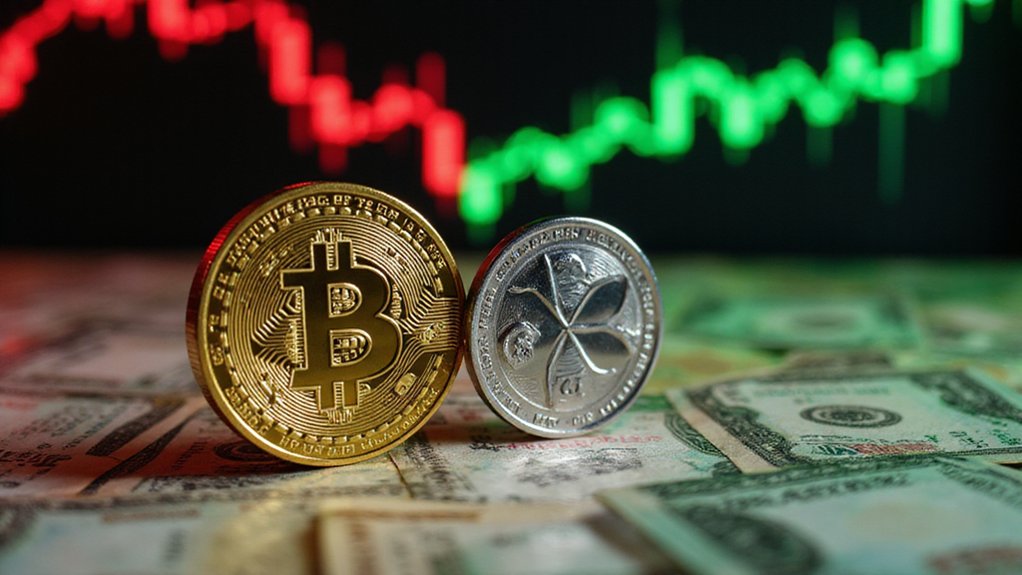The specter of trade tensions has once again descended upon global markets, casting its familiar shadow over traditional assets while simultaneously illuminating the peculiar dance between Bitcoin and XRP—two cryptocurrencies that couldn’t be more different in their fundamental philosophies yet find themselves competing for investor attention in an increasingly uncertain economic landscape.
Bitcoin, trading at approximately $105,174, maintains its position as the cryptocurrency world’s de facto store of value, bolstered by institutional adoption and that increasingly quaint notion of fixed supply scarcity.
Yet despite its “digital gold” credentials and unmatched brand recognition, Bitcoin has managed only a modest 3% gain in 2025—hardly the explosive performance one might expect from an alleged hedge against economic uncertainty.
XRP, meanwhile, has surged 23% year-to-date, trading at roughly $2.16 and demonstrating that market logic occasionally operates in reverse proportion to maximalist fervor. The token has shown significant price appreciation, rising from $1.75 on April 9 to current levels around $2.55.
Market dynamics often reward pragmatism over ideology, as XRP’s impressive gains against Bitcoin orthodoxy clearly demonstrate.
This performance occurs despite—or perhaps because of—XRP’s fundamentally different approach to decentralization, favoring Ripple’s centralized validator model over Bitcoin’s energy-intensive consensus mechanism.
The irony becomes more pronounced when considering trade tensions’ theoretical impact on cryptocurrency adoption.
Economic uncertainty traditionally drives investors toward Bitcoin’s supposed safe-haven status, yet XRP’s transactional efficiency and institutional partnerships in cross-border payments appear better positioned to capitalize on volatile international trade environments.
Recent legal victories against the SEC have further enhanced XRP’s regulatory clarity—a luxury Bitcoin has long enjoyed without similar scrutiny. The Bitcoin ETF inflows have demonstrated unprecedented institutional demand, with BlackRock’s spot Bitcoin ETF recording over $1 billion in inflows during a single week alongside Bitcoin’s price rally above $100,000.
Current price forecasts suggest XRP could reach $2.05 to $2.45 by mid-2025, with optimistic projections approaching $10-$12 by 2029. Market indicators reveal a predominantly bearish sentiment at 73%, suggesting institutional caution despite XRP’s recent gains.
Meanwhile, Bitcoin maximalists predict scenarios where Bitcoin reaches $100 million while XRP languishes at $20—implying a 99% collapse in XRP’s relative value that seems as ambitious as it is convenient for their narrative.
Trade tensions continue creating demand for cryptocurrency diversification, though the market’s response defies conventional wisdom.
Bitcoin’s institutional backing provides stability, while XRP’s smaller market capitalization enables more dramatic price movements.
Both cryptocurrencies benefit from fiat currency uncertainty, yet their divergent year-to-date performance suggests investors are hedging their hedges—a meta-strategy that would be amusing if it weren’t so revealing about market psychology.







